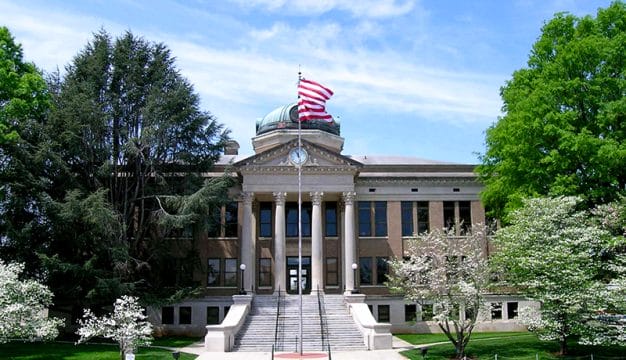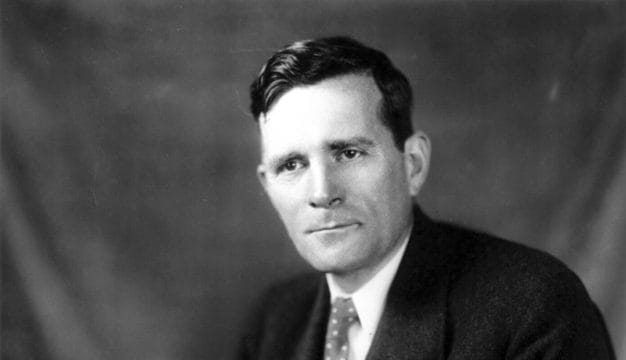Tuskegee
Tuskegee is located in central Alabama, 40 miles east of Montgomery. Tuskegee is the county seat of Macon County and has an area of 15.7 square miles, 15.5 of which is land, and 0.2 of which is water. The City of Tuskegee has a council-city manager form of government that consists of a four-member elected city council that includes the mayor and an appointed city manager, who acts as the chief administrative officer and oversees public services. The council members and the city manager each serve four-year terms.
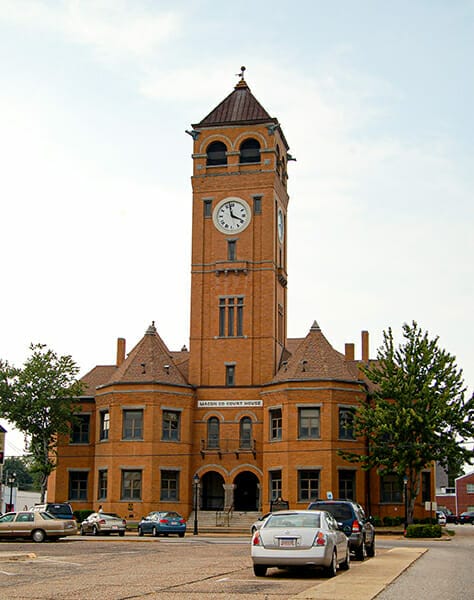 Macon County Courthouse
Tuskegee has been home to many nationally recognized figures. Rosa Parks was born there in 1913. The Commodores, who had a number of funk and soul hits during the 1970s and 1980s, met as students at Tuskegee University. Their lead singer, Lionel Ritchie, who later went on to considerable success as a solo act, attended Tuskegee on a tennis scholarship and graduated with a major in economics. Andre Thornton, who had a 14-year career in Major League Baseball for the Chicago Cubs, Montreal Expos, and Cleveland Indians, was born in Tuskegee in 1949.
Macon County Courthouse
Tuskegee has been home to many nationally recognized figures. Rosa Parks was born there in 1913. The Commodores, who had a number of funk and soul hits during the 1970s and 1980s, met as students at Tuskegee University. Their lead singer, Lionel Ritchie, who later went on to considerable success as a solo act, attended Tuskegee on a tennis scholarship and graduated with a major in economics. Andre Thornton, who had a 14-year career in Major League Baseball for the Chicago Cubs, Montreal Expos, and Cleveland Indians, was born in Tuskegee in 1949.
Early History
The land on which Tuskegee now stands was first settled soon after the French and Indian War of 1754-1763. The treaty officially ending the war declared that France would surrender Alabama to the English, who took control of the French fort at Tuskegee. After the American Revolution, the United States took possession of the area, which became part of the Mississippi Territory and in 1819 part of the state of Alabama. The settlement of Tuskegee was founded and laid out in 1833, one year after the establishment of Macon County by Gen. Thomas Simpson Woodward, who fought in the Creek War of 1813-14 under Gen. Andrew Jackson. Woodward is said to have selected Tuskegee as the county seat. He also built the first home in town.
At the time of Tuskegee’s founding, the area was still populated by members of the Creek Nation. The town itself was named after a Creek leader named Taskigi, whose town was located in the triangle formed by the convergence of the Coosa and Tallapoosa Rivers. Tuskegee was located along an historic Indian trail that later became the highway between Fort Mitchell and Montgomery. After the Creek Indians were forcibly removed from Alabama in 1836, the area began to fill with white settlers. The city was officially incorporated in 1843, and the first local newspaper, the Tuskegee News, was first published in April 1865.
Tuskegee was one of five settlements in Macon County that attracted a significant amount of trading business by 1855. Of these settlements, however, Tuskegee was the only one that did not have the advantage of being located on a railroad, but because it was the county seat as well as in a central location, it still drew business. Also, because the railroad did not run through Tuskegee, as it did in most towns, the town streets were laid out around the central square where the courthouse was located.
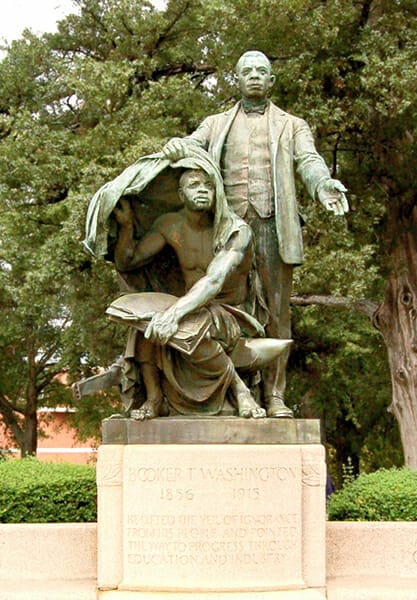 Lifting the Veil of Ignorance Statue in Tuskegee
The town gained national fame with the establishment of what is now Tuskegee University in 1881 by educator Booker T. Washington and through the agricultural research made famous by George Washington Carver. Tuskegee gained additional recognition during World War II as the site of the Tuskegee Airfield, home of the renowned Tuskegee Airmen. More than 1,000 pilots were trained at historic Moton Field and Tuskegee Army Air Field. In more recent history, the town garnered much negative press as the site of the infamous Tuskegee Syphilis Study, in which African American men were used as subjects, without their knowledge or consent, in a public health study on the effects of untreated syphilis. The experiment resulted in the creation of the National Center for Bioethics in Research and Health Care at Tuskegee University in 1997.
Lifting the Veil of Ignorance Statue in Tuskegee
The town gained national fame with the establishment of what is now Tuskegee University in 1881 by educator Booker T. Washington and through the agricultural research made famous by George Washington Carver. Tuskegee gained additional recognition during World War II as the site of the Tuskegee Airfield, home of the renowned Tuskegee Airmen. More than 1,000 pilots were trained at historic Moton Field and Tuskegee Army Air Field. In more recent history, the town garnered much negative press as the site of the infamous Tuskegee Syphilis Study, in which African American men were used as subjects, without their knowledge or consent, in a public health study on the effects of untreated syphilis. The experiment resulted in the creation of the National Center for Bioethics in Research and Health Care at Tuskegee University in 1997.
Demographics
According to 2020 Census estimates, Tuskegee recorded a population of 8,443. Of that number, 96.8 percent identified themselves as African American, 2.2 percent as white, 0.7 percent Hispanic, 0.6 percent as two or more races, 0.3 percent Asian, and 0.1 percent American Indian. The median household income was $28,629 and a the per capita income was $18,811.
Employment
According to 2020 Census estimates, the workforce in Tuskegee was divided among the following industrial categories:
- Educational services, and health care and social assistance (38.7 percent)
- Arts, entertainment, recreation, accommodation, and food services (13.1 percent)
- Retail trade (11.5 percent)
- Manufacturing (10.2 percent)
- Professional, scientific, management, and administrative and waste management services (6.9 percent)
- Public administration (6.2 percent)
- Other services, except public administration (5.7 percent)
- Finance, insurance, and real estate, rental, and leasing (3.4 percent)
- Transportation and warehousing and utilities (2.1 percent)
- Construction (1.7 percent)
- Wholesale trade (0.5 percent)
- Agriculture, forestry, fishing and hunting, and extractive (0.4 percent)
Education
Tuskegee is part of the Macon County Schools, which oversees an early learning center, two elementary schools, a middle school, and a high school in the city.
Tuskegee has played a major role in the history of Alabama, as well as the nation, especially in the field of education. It was the site of the first law school in Alabama and also was important in women’s education with the opening of the Baptist College for Women in 1848 and the Tuskegee Female College in 1856 (which later moved to Montgomery and became Huntingdon College). The Tuskegee Military Institute for Boys was established there in 1898. Of most significance was the establishment of the Tuskegee Normal School for Colored Teachers in 1881, later called the Tuskegee Institute, and now Tuskegee University. In addition to innovative and beneficial research by George Washington Carver, the school made great strides in agricultural education and outreach among area farmers with its Movable School, headed by Thomas Monroe Campbell.
Transportation
Two major highways intersect in Tuskegee; U.S. Highway 80 is the main east-west artery, and U.S. Highway 29 provides a north-south route. Historic Moton Field Municipal Airport is located three miles north of the central business district in Tuskegee and is still used for public air transportation. Tuskegee also is serviced by the Greyhound Bus line, which provides transportation to many cities all over the United States, and specifically offers a route to and from the Hartsfield-Jackson Atlanta International Airport.
Events and Places of Interest
 Tuskegee Airmen National Historic Site
Tuskegee University is home to several attractions, including the Tuskegee Institute National Historic Site, which includes the original buildings constructed in brick by the first students. It has been part of the National Park System since 1974. The site also includes the George Washington Carver Museum and The Oaks, Booker T. Washington’s home. The Tuskegee Airmen National Historic Site, at Moton Field, is a major historical attraction that is currently housed in a temporary visitors center. A new interpretive facility is in the planning stages.
Tuskegee Airmen National Historic Site
Tuskegee University is home to several attractions, including the Tuskegee Institute National Historic Site, which includes the original buildings constructed in brick by the first students. It has been part of the National Park System since 1974. The site also includes the George Washington Carver Museum and The Oaks, Booker T. Washington’s home. The Tuskegee Airmen National Historic Site, at Moton Field, is a major historical attraction that is currently housed in a temporary visitors center. A new interpretive facility is in the planning stages.
The Butler Chapel AME Zion Church, located in downtown Tuskegee, served an important role during the civil rights movement. On June 25, 1957, three thousand black residents met at this church to protest the state legislature’s decisions to minimize the number of black voters in Tuskegee.
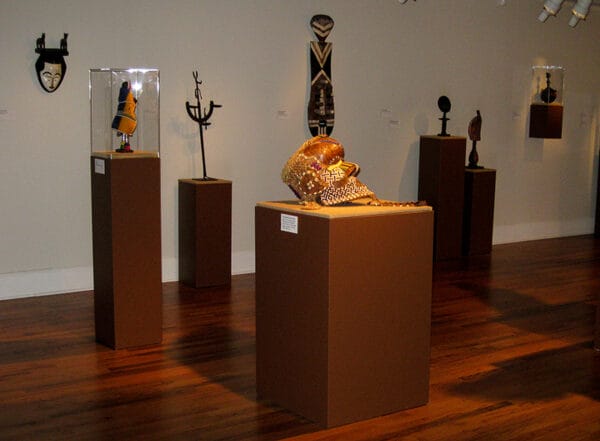 Lovette W. Harper Collection of African Art
Tuskegee has an active cultural scene, and many citizens participate in the Tuskegee Repertory Theatre at the Jesse Clinton Arts Centre, which presents dramatic and musical productions that reflect the cultural legacy of the town and its African American residents. Visitors can learn about the contributions of Tuskegee citizens to its history and to the history of human rights at the Tuskegee History Center (formerly the Tuskegee Human and Civil Rights Multicultural Center), which offers displays and programming related to town and county history and the role it has played in human rights. The Legacy Museum exhibits numerous objects and works of art given to the university by donors and alumni.
Lovette W. Harper Collection of African Art
Tuskegee has an active cultural scene, and many citizens participate in the Tuskegee Repertory Theatre at the Jesse Clinton Arts Centre, which presents dramatic and musical productions that reflect the cultural legacy of the town and its African American residents. Visitors can learn about the contributions of Tuskegee citizens to its history and to the history of human rights at the Tuskegee History Center (formerly the Tuskegee Human and Civil Rights Multicultural Center), which offers displays and programming related to town and county history and the role it has played in human rights. The Legacy Museum exhibits numerous objects and works of art given to the university by donors and alumni.
Recreational opportunities can be found at Lake Tuskegee, which offers picnic areas and 92 acres of water for fishing, boating, and water skiing. The 11,000-acre Tuskegee National Forest features hiking trails and also hosts a replica of Booker T. Washington’s childhood cabin.
In honor of one of Tuskegee’s most famous figures, the town holds two annual celebrations: the George Washington Carver (GWC) Arts and Crafts Festival and the Annual Carver Sweet Potato Festival. The GWC Arts and Crafts Festival is held on the Tuskegee Square every May on the Saturday before Mother’s Day. It features arts and crafts, vendors, rides, farm exhibits, talent shows, and other entertainment including door prizes. The Annual Carver Sweet Potato Festival is held every third Saturday in October, also on the town square. It specifically celebrates Carver’s sweet potato research. The event includes current sweet potato farmers sharing cultivation tips, entering competitions, and ultimately selling sweet potatoes.
Additional Resources
Heritage of Macon County, Alabama. Clanton, Ala.: Heritage Publishing Consultants, 2003.
Yamaguchi, Elizabeth Hughes. “Macon County, Alabama: Its Land and its People from Pre-history to 1870.” Master’s thesis, Auburn University, 1981.
